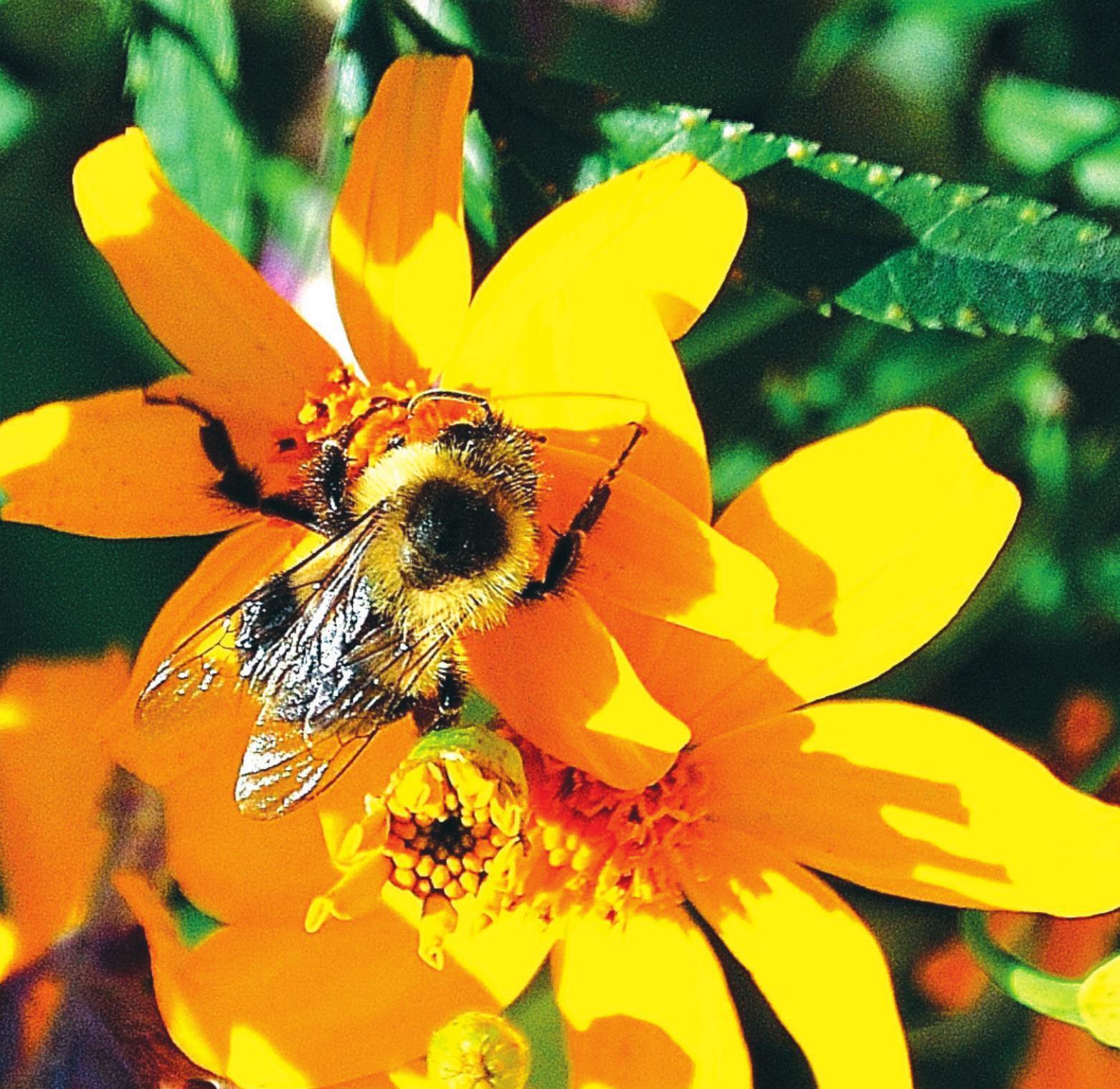

Copper Canyon Daisies are perfect for pollinators. Photos by Norman Winter
Copper Canyon Daisy will thrill with fragrance
At the Coastal Georgia Botanical Gardens, it was the Copper Canyon daisy that was guaranteed to put all visitors under a spell from the smell. It happened on a regular basis. After a class, I would take the students or clients on a personal tour of the garden. We would exit the side door of the conference center right into the Mediterranean Garden and instantly, they became fixated on a shrubby marigold with a tantalizing fragrance.
Oddly enough, it makes no difference whether the plant is blooming. The fragrant foliage was like a Pied Piper, drawing them in. It would take several minutes before I could get their attention and point out the other terrific plants or the nearby hummingbirds or butterflies.
Woe be unto me if I couldn’t tell them all of the particulars about this plant. This hypnotic effect on visitors made me much more appreciative of its amazing attributes. I need to add one caveat with a question: Does your nose know what my nose knows? Occasionally, I did find someone who didn’t like the aroma.
The Copper Canyon daisy is native to Arizona and northern Mexico and supposedly to the Copper Canyon area, which is Mexico's version of the Grand Canyon. I have been there and indeed it is spectacular. I long for those days of a safe traveling adventure riding the train from Chihuahua to Copper Canyon and seeing the incredible vistas all along the way.
Copper Canyon daisy, also called mountain marigold, is known botanically as Tagetes lemmonii. The fragrance of the foliage permeates the air with citrus-like scent. You would swear the botanical name originated from the scent but it is actually in tribute to the husband-and-wife team who discovered it, John G. and Sarah Lemmon.
It would be normal if your first thought was that a plant native to Arizona and Northern Mexico would fail to survive as far north as San Marcos. Many references also suggest that the low- to mid-20s would be their threshold. Yet it survived our 30-year freeze with temperatures as low as 16 caused no big issues as they shot from the ground. Last year’s Big Chill in Central Texas might have taken it out but it will always be worth growing.
The Copper Canyon daisy has winner written all over it. It is drought tolerant and tough as nails. Deer and rabbits pose no threat, and it might possibly act as a deterrent. In the fall when they bloom the most, their one and half-inch marigold-like blossoms bring in an assortment of bees and butterflies. Plant them in full sun into welldrained soil and you will be on your way to horticultural bliss.
In our garden we grew them with various agave species and lamb’s ear where their lacy filigreed-like foliage is an eye-catching contrast. The golden-yellow blossoms are also partnered with other great fall bloomers like the Mexican bush sage (Salvia leucantha) and the red blooming autumn sage, (Salvia greggii), creating colorful harmony.
Herb lovers will cherish Copper Canyon daisy for not only the fragrance and color, but the culinary attributes of both the flower and foliage. I have not eaten either but there are plenty of gardeners that tout their usage.
If you want to create an olfactory or sensory experience your children and grandchildren will remember for a lifetime, then make sure to include the treasured Copper Canyon daisy in your garden this spring. Follow me on Facebook @NormanWinterTheGardenGuy for more photos and garden inspiration.











